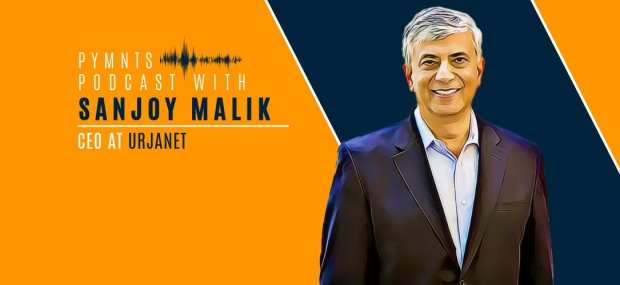Utility Data’s New Identity

There are plenty of high-tech ways to verify a customer’s identity — fingerprints, voiceprints, faceprints, phone data. There are even technologies built to identify a customer based purely on how they hold a smartphone in their hand.
The race for the newest, fanciest ways to ID a customer means a useful, classic way occasionally gets overlooked for its lack of flash. Utility bills, for example.
There is, in truth, not much sexy about the average water or electric bill — consumers pay them as a mundane part of everyday life. However, Urjanet CEO Sanjoy Malik told Karen Webster in this week’s edition of the Matchmaker Is In podcast, there is a lot of useful information packed into the average utility bill.
“Traditional utility data has been a source of, and a good way to verify, identification,” Malik explained. “It’s why, when you open a bank account, you often have to bring a utility bill with you, because it pins down both where you live and how long you’ve lived there from a third-party source.”
It works great in person, he noted, but, in the past, it really wasn’t usable for any kind of digital interaction or expanded use because of its limits. Someone might ask for a utility bill to be faxed (yes, faxed), but even doing that wipes out a lot of its usefulness because it no longer comes directly from a third-party source.
Urjanet is a platform meant to bridge that digital divide for consumer utility data by collecting and aggregating it into a secure, digitally shareable form, and turning it loose as a tool for businesses to apply to a variety of consumer interactions.
A New Platform For Access
Urjanet has been in business for about a decade, and is a pure-play data aggregation business. Clients purchase access to its aggregated, verified consumer data from utility providers around the world — water, power, natural gas, wireless, etc.
According to Malik, the platform is adding approximately 100 new providers a month to its current 6,000, with connections to 95 percent of U.S. electric providers, which is the kind of critical mass it is working to secure across all utilities. The utility companies are not paid for the data because it’s not technically theirs to sell, but they are benefited by the ease with which they are able to respond to requests from third parties to provide it.
The types of businesses interested in Urjanet’s services vary widely, but the majority of its clients fall into two major buckets. The first, he noted, involves underwriters looking to establish credit information on applicants, particularly thin-file applicants. The second involves firms in which their main business is providing identity verification.
“We make it possible to add utility verification to the other data they are collecting, as the possibility for cross-tabbing [has] tremendous value,” he said. “If they, say, already have driver’s license data, for example, it adds to the value of the information they already have because that data can now be cross-checked from a new, independent source.”
Accessing Consumer Data
Urjanet holds the position that a consumer’s utility data belongs to them, which means all the company’s access comes from user permission — a customer might give the utility provider the right to access their electric or wireless carrier account data. Consumers who have opted in can have their data become part of that “bundle,” which is available to the lender or other third party via an API.
“The consumer owns the data, and is the person granting permission to access it through their lender or the platform verifying their identity. But from the utility company’s perspective, we are providing a service to [get] this data out there and [be used] by their customers, which is a great experience for both parties,” Malik said.
Catching A Wave
Urjanet didn’t start out looking to aggregate data that could be used for the purpose of identity or risk management. The firm’s initial area of interest was to build an energy consumption data network, with an eye toward improving sustainability. What it found as it built out a utility network was that it had basically never been done at scale before, with the data it was collecting and aggregating going beyond energy and sustainability.
In particular, he noted, it was good for risk assessment.
“Our work just coincided with user alternative data for financial services,” Malik explained. “The fact that we had it — just as the use of alternative scoring and data was becoming more prevalent — really pushed us to decide to launch our financial [services] product last year.”
It’s a challenging platform to build and manage, he noted. “Utilities,” as a term, encompasses a lot of offerings — from giant municipal offerings to small power cooperatives, and everything in between, all with their own infrastructures, formats and methods of accessing the data. Malik said the Urjanet platform must manage this diversity and complexity of the requests on demand, from sources as far-ranging as credit rating agencies or banks, and all in a standard format.
The utility bill hasn’t been living up to its potential for a long time because it wasn’t useful or full of data that could be put toward multiple purposes. The problem was access. With that hurdle lifted, he noted, the possibilities for further utility from utilities is vast and unexplored.